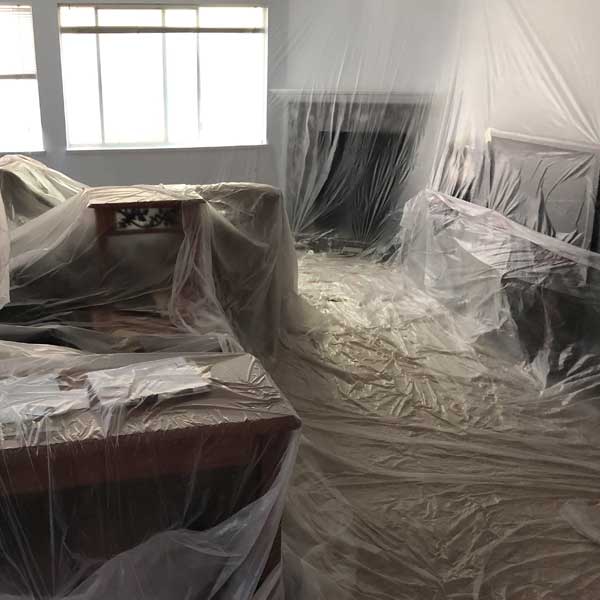Need Repair in The Great Vancouver Abbotsford Areas – Contact Us >
As an industry tradesman with years of experience in the world of drywall, I’ve witnessed the evolution of this essential building material and its numerous applications. From fixing bad drywall texture to the cost of drywalling a house in British Columbia (BC), the Canadian use of drywall to the fate of old drywall, and the differences between drywall and plaster, this article delves deep into the multifaceted world of drywall. Join me on this journey as I share insights into drywall’s past, present, and future.
The Canadian Connection: Drywall vs. Plaster
When it comes to constructing and renovating homes in Canada, drywall has become the go-to choice for both residential and commercial applications. It has largely replaced traditional plaster due to its ease of installation, cost-effectiveness, and versatility. The key question often asked is, “What’s the cost difference between drywall and plaster?”
In BC, like in most parts of Canada, drywall is the favored option due to its affordability. Plaster, while durable and timeless, is labor-intensive and can be considerably more expensive. The choice between drywall and plaster ultimately boils down to budget and aesthetic preferences.
Fixing Bad Drywall Texture: A Craftsmanship Endeavor
One of the common challenges in the drywall industry is dealing with bad texture jobs. Whether due to poor workmanship or environmental factors, a flawed drywall texture can mar the appearance of a space. Fixing bad drywall texture requires the skills of a seasoned professional.
The process involves:
- Assessment: Identifying the issues with the existing texture.
- Preparation: Repairing any damaged areas, such as cracks or holes.
- Texture Matching: Achieving a consistent texture that blends seamlessly with the surrounding area.
- Finishing: Applying paint or other finishes to complete the repair.
The cost of fixing bad drywall texture can vary widely based on the extent of the damage and the complexity of the texture to be replicated. It’s essential to consult with a professional for a precise estimate.
The Fate of Old Drywall: Recycling and Sustainability
As we progress in the construction industry, sustainability and environmental concerns take center stage. The fate of old drywall is an important aspect of this conversation. In Canada, there’s a growing emphasis on recycling and reusing building materials, including drywall.
Old drywall can be recycled to create new gypsum products, reducing the strain on natural resources. Proper disposal and recycling of old drywall are vital steps in minimizing its impact on the environment.
Drywall Lifespan and Waterproof Drywall
The longevity of drywall depends on various factors, including the quality of installation, maintenance, and environmental conditions. On average, drywall can last anywhere from 30 to 70 years. Regular maintenance, such as fixing cracks and repainting, can extend its lifespan.
In areas prone to moisture, such as bathrooms and kitchens, waterproof drywall or greenboard is recommended. This type of drywall is specially designed to resist moisture and mold, increasing its durability in damp environments.
Global Perspectives: British and Chinese Use of Drywall
While drywall is a staple in North America, its usage varies globally. In Britain, plaster remains a prominent choice for interior wall finishing due to its historical significance and aesthetic appeal. However, drywall is gaining popularity in modern construction due to its efficiency and cost-effectiveness.
Conversely, the term “Chinese drywall” gained notoriety in the early 2000s when imported drywall from China was found to emit harmful gases and corrode metal components in homes. This issue highlighted the importance of quality control and the need for strict regulations in the drywall industry.
Standard Thickness of Drywall in Canada
In Canada, the standard thickness of drywall sheets is typically 1/2 inch or 5/8 inch. The choice between these thicknesses depends on factors such as wall framing and insulation requirements. Thicker drywall is often used for soundproofing or in areas where added durability is needed.
Cost to Drywall a House in BC
Determining the cost to drywall a house in British Columbia can be complex, as it depends on various factors, including the size of the house, labor costs, and the choice of drywall thickness and finish. On average, the cost per square foot for drywall installation in BC can range from $1.50 to $2.50.
In conclusion, drywall is a fundamental building material with a rich history and a promising future. From texture repair to sustainable disposal, drywall professionals play a vital role in shaping the spaces we live and work in. As we navigate the dynamic world of construction, it’s crucial to balance cost considerations with quality and sustainability, ensuring that drywall continues to be a cornerstone of modern architecture.





